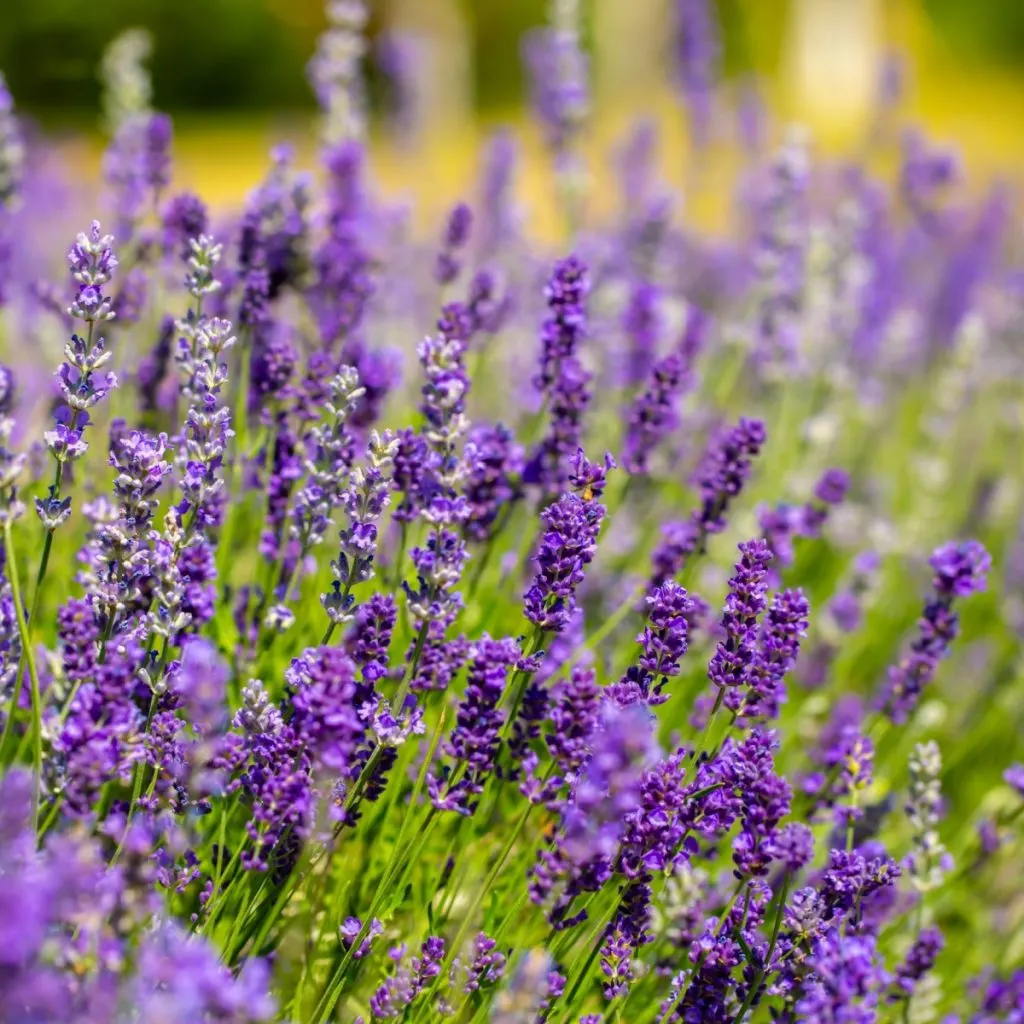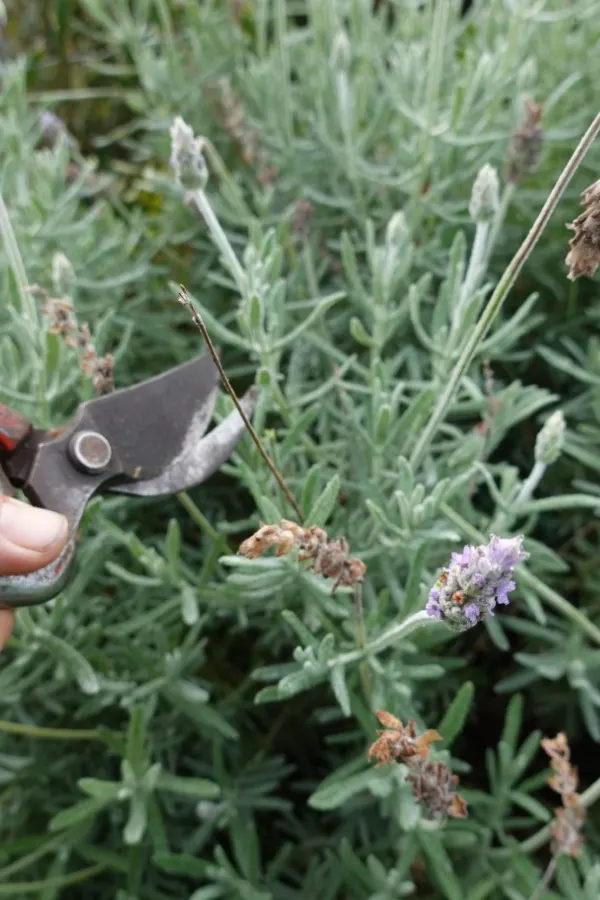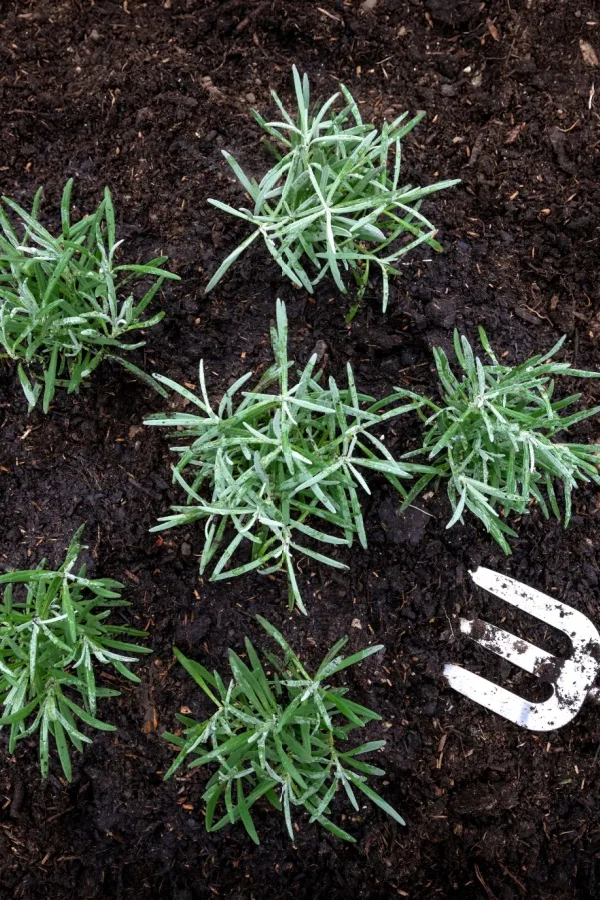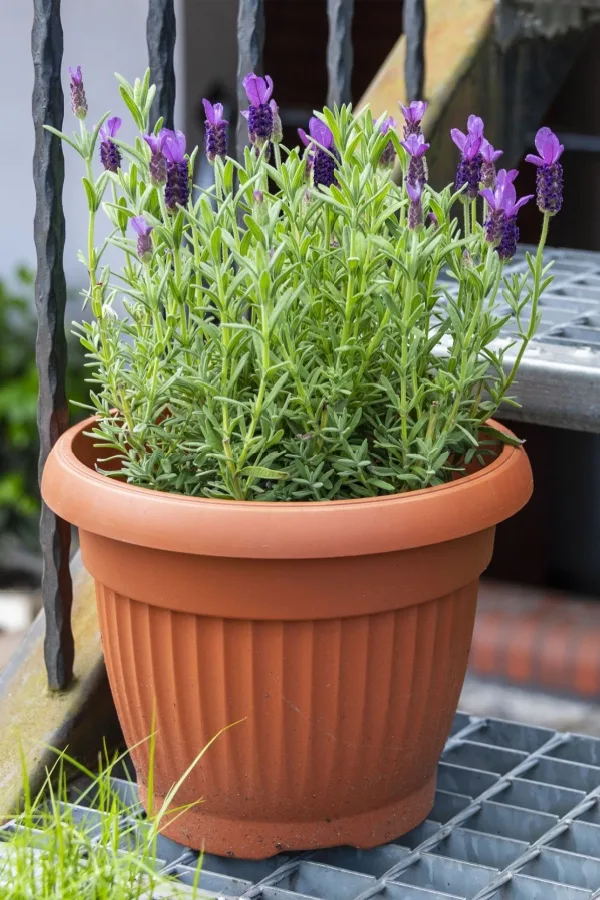Wondering what to do with your lavender plants this fall as they begin to fade?
Lavender is one of the most popular flowering perennials to grow thanks in part to its stunning purple blooms and calming fragrance. Not only is it’s scent pleasing – it also helps to deter mosquitoes, spiders, ticks, gnats, mice and deer!
Lavender also happens to be one of the longest-blooming perennials around. In fact, with proper deadheading and care, it’s more than capable of blooming up to four times every year. But one thing is for sure – it’s the care that you provide plants during the fall that can really have them ready to bloom in full all next year!

Proper fall pruning, fertilizing, watering and more all play a huge part in helping lavender to stay strong and healthy – or end up a casualty of winter’s fury. With that in mind, here’s a look at what you should be doing for your lavender plants this fall – and what you shouldn’t!
What To Do With Lavender Plants In The Fall – And What Not To!
Deadheading
Deadheading is the process of removing dying blooms from the plants. It’s a great way to keep plants looking neat and tidy. The most important reason for deadheading, however, is to allow the plant to focus its energy on producing stronger roots.
Even though the lavender blooms are fading, the plant will continue to spend nutrients and resources attempting to “heal” their dying blooms. After that, all the energy goes into forming seeds. By cutting those blooms off early, the plant can refocus its energy on its roots.
Healthy, strong root systems are important for creating and supporting bloom growth next year. In addition, they also help plants withstand the thawing and freezing that occurs during the winter months.
To deadhead lavender, use a pair of garden pruners or shears to cut just below the bloom head as soon as you notice the blooms starting to fade.

To Prune Or Not – What To Do With Lavender Plants In The Fall
For the most part, when it comes to lavender plants, the less you do, the better. Even though fall might be the perfect time to prune several different perennial plants, lavender isn’t one of them.
The added stress of pruning will actually leave plants more susceptible to the winter elements. Not only that, but heavy pruning can also trigger plants to produce new late season fall growth – growth that won’t be able to withstand the cold temperatures.
Instead of doing heavy pruning in the fall, wait until spring to handle the task. You can do light pruning or reshaping in the fall but save strong pruning for spring. This is especially important for plants that grow in northern locations.
Avoid Dividing Plants – What To Do With Lavender Plants In The Fall
In addition to forgoing pruning, you also shouldn’t divide lavender plants in the fall. In fact, the chore really shouldn’t be done – ever. Lavender grows from a woody base, similar to how a bush or shrub grows. Trying to dig up and divide the root will likely end up with the entire plant dying.
To help control larger plants, you can instead cut plants down back to the ground during the spring. Heavy pruning like this will usually delay blooming for a year, leaving you with smaller plants.

As for most other perennial plants during the fall months, this isn’t the case. In fact, most perennials can easily be divided and transplanted during the fall season. See our article: “Dividing Perennials In The Fall – The Simple Keys To Flowerbed Success!”
Watering & Fertilizing – What To Do With Lavender Plants In The Fall
Along with keeping pruning to a minimum, you should be careful not to overwater lavender plants in the fall. Lavender plants require well-draining, drier soil to begin with. And unless you are experiencing a severe drought in the fall, you don’t need to water your lavender plants.
Overwatering plants increases the likelihood of mildew and mold issues. In addition, excess moisture can cause the main stems to rot off and die. This is especially an issue during the fall months when the temperatures are cooler and the sunlight is less intense.
Another chore that should be skipped in the fall is fertilizing lavender plants. Even though they are heavy bloomers, lavender does not require heavy doses of nutrients in order to set blooms.
One thing you can do to help lavender plants out in the fall is to use compost. After plants go dormant between late fall and early spring, add one to two inches of compost around the base of plants.
The slow-release, low dose of nutrients in the compost will be plenty to get plants through the rest of the growing season. Affiliate Product Link: R&M Organics Premium Bagged Organic Compost

Mulching – What To Do With Lavender Plants In The Fall
In addition to a thin layer of compost, applying a few inches of mulch can really help to protect lavender’s roots from the thawing and freezing repeatedly throughout the winter – which is something that can take quite a toll on the plant!
Traditional bark mulches, shredded leaves, pine needles or straw are all excellent mulch choices. Be sure to keep the mulch away from the main stem to prevent mold and mildew from occurring.
Protect Potted Lavender – What To Do With Lavender Plants In The Fall
If you are growing lavender in pots or containers and you live in a location that experiences below-freezing temperatures, extra measures will need to be taken to protect the plants.
With most perennials that grow in pots or containers, the roots just don’t have enough insulation to withstand the cold. In these cases, there are really two different methods you can use to protect them.

First, you can bring your potted plant indoors during the winter. An unheated garage or cold basement are both perfect locations for this. Allow the plants to go dormant, and only water plants lightly once a month.
Another alternative is to actually plant your lavender – pot and all – into the ground. In this way, you are using the ground to help insulate and protect the plant’s roots. Once spring rolls back around, you can dig the pots up and grow them as container plants once again.
With a little protection and basic knowledge of what lavender needs – or doesn’t need – in the fall, you can ensure that your plants will be healthy, strong, and ready for blooming when spring arrives! And once spring does roll around, be sure to check out What To Do With Lavender In The Spring – How To Prune & More!
Simple Garden Life
Follow Our Facebook Page For Even More Great Tips! Simple Garden Life Facebook Page
Simple Garden Life is a website dedicated to keeping gardening fun, simple and enjoyable! We publish two new articles each week along with a new garden podcast episode every two weeks. This article may contain affiliate links.
